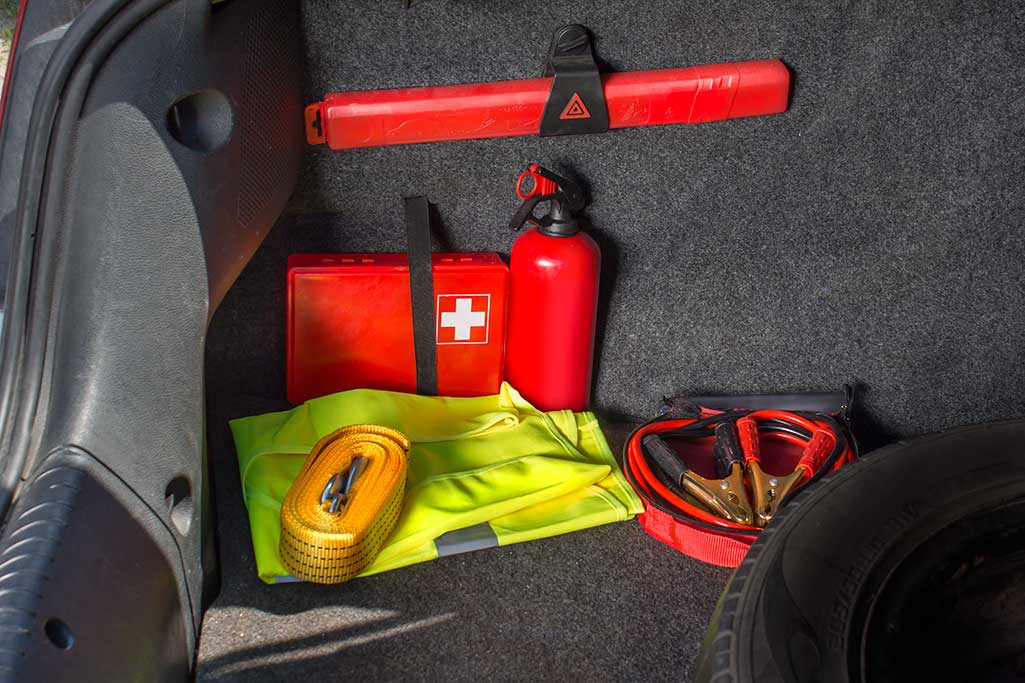Source: National Safety Council
This information is being provided for general informational purposes only. Meemic Insurance Company does not assume any liability in connection with providing this information.
Disaster can strike any time, any place – so it’s important to have supplies ready at home and in your car just in case. Here are some tips:
What Should You Keep in the Car?
Every vehicle should have an emergency supply kit located in the trunk. Kits should be checked every six months, and expired items should be replaced to keep it up to date.
Vehicle emergency supply kits should include:
- A properly inflated spare tire, wheel wrench and tripod jack
- Jumper cables
- Tool kit and/or a multipurpose utility tool
- Flashlight and extra batteries
- Reflective triangles and brightly colored cloth to make your vehicle more visible
- Compass
- First aid kit with gauze, tape, bandages, antibiotic ointment, aspirin, a blanket, nonlatex gloves, scissors, hydrocortisone, thermometer, tweezers and instant cold compress
- Nonperishable, high-energy foods, such as unsalted nuts, dried fruits and hard candy
- Drinking water
- Reflective vest in case you need to walk to get help
- Car charger for your cell phone
- Fire extinguisher
- Duct tape
- Rain poncho
- Additional items for cold weather include a snow brush, shovel, windshield washer fluid, warm clothing, cat litter for traction and blankets
It's also a good idea to keep family and emergency phone numbers, including your auto insurance provider and a towing company, in your phone.
What Should You Keep in the House?
Every home should have an emergency supply kit located in an accessible storage area. It's best if you store the items in plastic containers that are easy to grab and carry. Kits should be checked every six months, and expired items should be replaced to keep the kit up to date.
Emergency kits are meant to help you survive not only during an emergency, but also during the aftermath. According to a study by the Centers for Disease Control and Prevention, after a tornado in Marion, IL, 50% of the tornado-related injuries were suffered during rescue attempts, cleanup and other post-tornado activities.
Home emergency supply kits should include:
- One gallon of water per person per day for at least three days
- Enough nonperishable food for at least three days and a can opener; keep protein-packed foods you can cook without electricity, such as tuna, peanut butter and granola bars, and don't forget about food for your pets
- Hand-crank or battery-powered radio with extra batteries to stay up to date on the latest weather alerts
- Flashlight with extra batteries
- First aid kit with gauze, tape, bandages, antibiotic ointment, aspirin, a blanket, nonlatex gloves, scissors, hydrocortisone, thermometer, tweezers and instant cold compress
- Tool kit with basic tools, in case you need to shut off utilities
- Hand sanitizer and garbage bags for sanitation
- Plastic sheeting and duct tape in case of broken windows or a leaky roof
- Whistle to signal for help so rescuers can locate you
